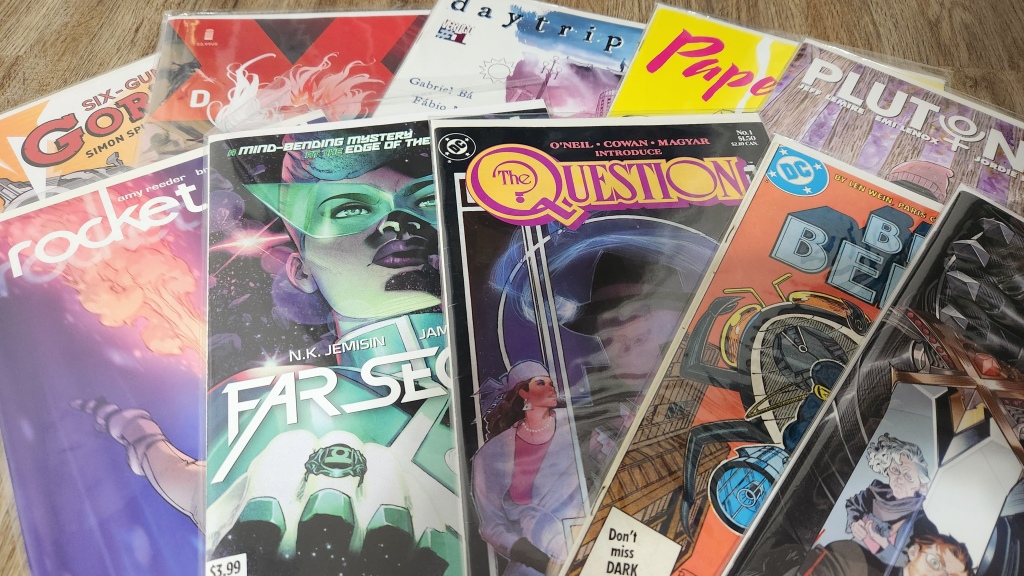Comics have a particular strength when it comes to poetry. The quickness of the panels being able to render different interpretations of a single line of poetry adds a new kind of depth to the poetic process. These panels themselves end up becoming another aspect of the poem—a line break becomes more of a gulf as the normally blank space is filled with images and color. Nowhere is this usage of panels as line breaks as strong as it is in Majnun and Layla: Songs from Beyond the Grave by Yann Damezin in the medium of graphic poetry.

Layla and Majnun is a classic piece of Persian poetry from the 12th century centered on the titular couple and the persistence of their love. So strong was the poet Qays ibn al-Mulawwah’s love for Layla bint Mahdi that he was given the nickname Majnun—possessed by Jinn—for his actions. In Majnun’s madness for his beloved, Layla’s father forbid the couple from ever seeing each other as that madness was considered shameful for a husband. Dejected, Majnun flees to the desert, never to be seen by his family, his tribe, or his beloved for the rest of his days. All anyone would know of him was the lines of poetry he muttered or the verses written in the sand for Layla. After Layla herself is married and passes of an illness years later, Majnun finds her grave and dies at that spot himself. However, this is the original story. Damezin takes another approach with his interpretation.

Javāb goī is a tradition in Persian literature in which an artist engages with another work to create something familiar, but new. Not a complete reinterpretation or remake of the original, but just different enough that the new work can both stand on its own and surprise those familiar with the original. In Damezin’s take on this classic, his structure is different. No longer is Layla simply a passive vehicle for Majnun’s love or married off before dying. Majnun, instead, dies alone in the desert, surrounded by the animals enraptured by his words of love. Upon his death, however, the animals quickly devour his corpse, but his words persist in him and are carried to Layla far away. She refuses to join him in death as he requests with those final words through the animals of the desert—Layla wishes to live, even if it is without him, as this life has always only been her own. It is here that she disappears from her home, never to be seen or heard of from anyone since.

It is only in comics could this interpretation exist. Damezin’s panels, colors, and lines reflect perfectly the feeling of the words of the original poem while seamlessly allowing his own vision to shine through. His art here, both literal and interpretive of the original lines, adds more than a simple narrative would allow—the images let readers interpret what is being read just as they would the text itself.
Get excited. Get restoryed.

Drew Barth (Episode 331, 485, & 510) resides in Winter Park, FL. He received his MFA from the University of Central Florida.


Leave a comment